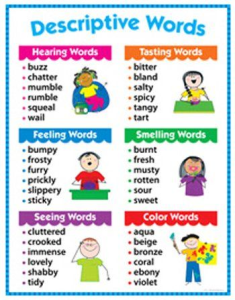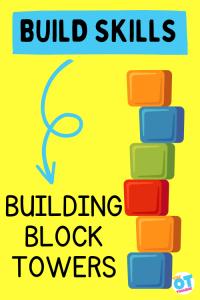Name games are a great way to introduce young children to the letters and sounds of the alphabet while also building their social and cognitive skills.
Plus, they can be played anytime and anywhere, making them a perfect go-to activity for play dates, family gatherings, or even road trips.
Now, we have compiled a list of interesting name games for preschoolers that are sure to keep them entertained and help them develop important skills along the way.
From classic games like “I Spy” to creative twists like “Name Salad,” these games are easy to set up and require minimal materials.
So, grab a pen and paper, gather your little ones, and let’s dive into the world of name games!
Name Bingo –

Bingo is a classic game that children of all ages love, and Name Bingo is a great way to get preschoolers excited about learning the letters of the alphabet. To play, create bingo cards with letters of the alphabet in each square, and then call out names that start with different letters. The first player to get five letters in a row, whether vertically, horizontally, or diagonally, yells out “Bingo!” and wins.
Name Salad –

This game is perfect for encouraging creativity and imagination in preschoolers. To play, have each child say their name and then add a descriptive word that starts with the same letter as their name. For example, if a child’s name is Lily, they could add the word “lovely” to create “Lily the lovely.” The game continues around the circle with each child adding a descriptive word to the previous name until everyone has had a turn.
Related: 25 Outdoor Games for 4 – 5 Year Olds
Name Chain –

This game is great for building memory skills and helping children learn to focus and pay attention. To play, have the first child say their name, and then the next child must say the first child’s name before saying their own. The game continues around the circle with each child adding their name to the chain until everyone has had a turn.
I Spy Names –

This game is a fun twist on the classic “I Spy” game that preschoolers love. To play, take turns saying “I spy with my little eye, someone whose name starts with the letter ___.” The other players must then guess who the person is based on the letter provided. This game is a great way to reinforce letter recognition and encourage critical thinking skills.
Related: 20 Quiet Time Activities for Preschoolers
Name Hunt –

This game is perfect for getting preschoolers up and moving around while also learning about the letters of the alphabet. To play, hide letters around the room or outdoor space and have the children search for them. Once a child finds a letter, they must say a name that starts with that letter before moving on to find the next one. This game is a great way to combine physical activity with learning and can be easily adapted for different skill levels.
Name Chain Reaction –

This game is a fun twist on Name Chain that incorporates physical movement. Have the first child say their name and do a simple action, such as clapping their hands. The next child must repeat the first child’s name and action before adding their own name and action. The game continues around the circle with each child repeating the previous names and actions before adding their own.
Name Scavenger Hunt –

This game is perfect for encouraging preschoolers to use their observation skills while learning about the letters of the alphabet. To play, give each child a list of letters to find around the room or outdoor space. Once they find a letter, they must say a name that starts with that letter before moving on to find the next one.
Name Rhyme Time –

This game is a great way to introduce preschoolers to the concept of rhyming words while also building their vocabulary. To play, have each child say their name and then come up with a word that rhymes with their name. The game continues around the circle with each child adding a rhyming word to the previous name until everyone has had a turn.
Name Relay –

This game is a fun way to incorporate teamwork and physical activity while also reinforcing letter recognition. To play, divide the children into teams and have each team line up. Give the first child in each line a letter, and they must run to the other end of the room or outdoor space and back, saying a name that starts with their letter before tagging the next child in line.
Name Storytime –

This game is a great way to encourage creativity and storytelling in preschoolers. To play, have each child say their name and then add a sentence to a story, starting with the next letter of the alphabet. For example, if the first child’s name is Alice, they could start the story with “Alice went on an adventure.” The game continues around the circle with each child adding a sentence to the story, starting with the next letter of the alphabet.
Name Tower –

This game is a great way to build fine motor skills while learning about the letters of the alphabet. To play, give each child a set of building blocks or other small objects, and have them build a tower using only objects that start with the same letter as their name.
Name Sorting –

This game is perfect for reinforcing letter recognition and sorting skills. To play, give each child a set of letter cards, and have them sort the cards into two piles, one for letters that appear in their name and one for letters that do not.
Name Toss –
This game is a fun way to incorporate physical activity and coordination while also reinforcing letter recognition. To play, create a target with different letters on it, and have the children take turns tossing a ball or beanbag onto the target. Once the ball lands on a letter, the child must say a name that starts with that letter.
Name Match –

This game is a great way to build memory and matching skills while also learning about the letters of the alphabet. To play, create pairs of cards with different letters on them, and have the children take turns flipping over two cards at a time, trying to find a match. Once they find a match, they must say a name that starts with that letter.
Name Twist –

This game is a fun and creative way to incorporate movement while learning about the letters of the alphabet. To play, have each child say their name and then do a simple action, such as touching their toes. The next child must repeat the previous name and action before adding their own name and action, but they must also do the previous child’s action before adding their own. The game continues around the circle with each child repeating all the previous names and actions before adding their own.
Name Bingo –

This game is a fun twist on the classic bingo game that incorporates name recognition. Create bingo cards with different names on them and have the children mark off the names as they are called out. The first child to mark off all their names can shout “Bingo!” to win the game.
Name Word Search –

This game is a great way to reinforce letter recognition and spelling skills while also learning about different names. Create a word search puzzle with different names hidden within the grid, and have the children find and circle the names as they find them.
Name Hopscotch –

This game is a fun and active way to reinforce letter recognition and physical coordination. Create a hopscotch grid with different letters in each square, and have the children hop through the grid, saying a name that starts with each letter as they land on it.
Name Relay Race –

This game is a great way to incorporate teamwork, physical activity, and letter recognition. Divide the children into teams and have each team line up. Give the first child in each line a letter, and they must run to the other end of the room or outdoor space and back, saying a name that starts with their letter before tagging the next child in line.
Name Memory –

This game is a classic memory game that incorporates name recognition. Create pairs of cards with different names on them, and have the children take turns flipping over two cards at a time, trying to find a match. Once they find a match, they must say the name out loud before taking the cards. The child with the most matches at the end of the game wins.


